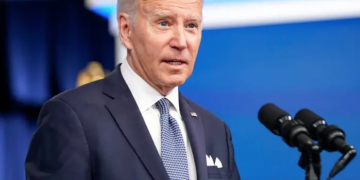Before his victory was even certified by Congress and long before his inauguration, President Trump was already working to name senior administration officials and Senators were scheduling meetings with nominees.
From Secretary of State to National Security Advisor, the 15 Cabinet Secretaries are just a small drop of the more than 4,000 appointments President Trump will make when he assumes office January 20th. More than 1,200 of those appointments will require Senate approval.
Before a person is even formally nominated, the nominees begin an informal process of meeting one-on-one with Senators, trying to win over skeptics and shore up supporters, while campaign efforts work to generate grass-roots support among the electorate.
Everyday citizens may not get to vote on nominees, but calls, emails, letters, and other communications sent by constituents to their Senators can help sway the vote of uncommitted lawmakers.
During one-on-one sessions with lawmakers, nominees can discuss at length issues of specific concern to that Senator and take more time to talk about details than would normally be available in a hearing.
Meanwhile the paperwork begins. Nominees are required to fill out disclosures, release personal and financial information, and submit to in-depth FBI background checks which are then released to lawmakers. Depending on a candidate’s history and background this process can be hundreds or thousands of pages of documents concerning education, family, business interests, political activity, and any other information that might cover conflicts of interest or give insight into the nominee.
Then the public hearings begin.
Nominees are assigned to a hearing by a Senate Committee with relevant oversight of their appointed office. Secretary of Defense Major Pete Hegseth appeared before the Armed Services Committee while National Security Advisor Congresswoman Tulsi Gabbard appeared before the Intelligence Committee.
Wyoming Senator John Barrasso serves as Senate Republican Whip and is overseeing the entire process for all nominees.
After a public hearing and vote from their respective committees, nominations are debated on the floor by the full Senate. Nominees need a majority of votes to be approved. The Republicans hold a three-seat majority and Vice President JD Vance has the ability to cast a tie-breaking vote if necessary.
The last time a Cabinet nominee was rejected by the Senate was in 1989 when George H.W. Bush’s nominee John Tower was rejected as Secretary of Defense.
Nominations for some of the most senior cabinet positions are typically voted on before the President is sworn in so that they may be sworn in on the same day and able to immediately begin working alongside a new President.Of the 22 announced nominees for high-level positions, only one, Congresswoman Elise Stefanik, has yet to be confirmed. Nominated to be the United States’ Ambassador to the United Nations, her confirmation hearing is set for April 2nd.



























